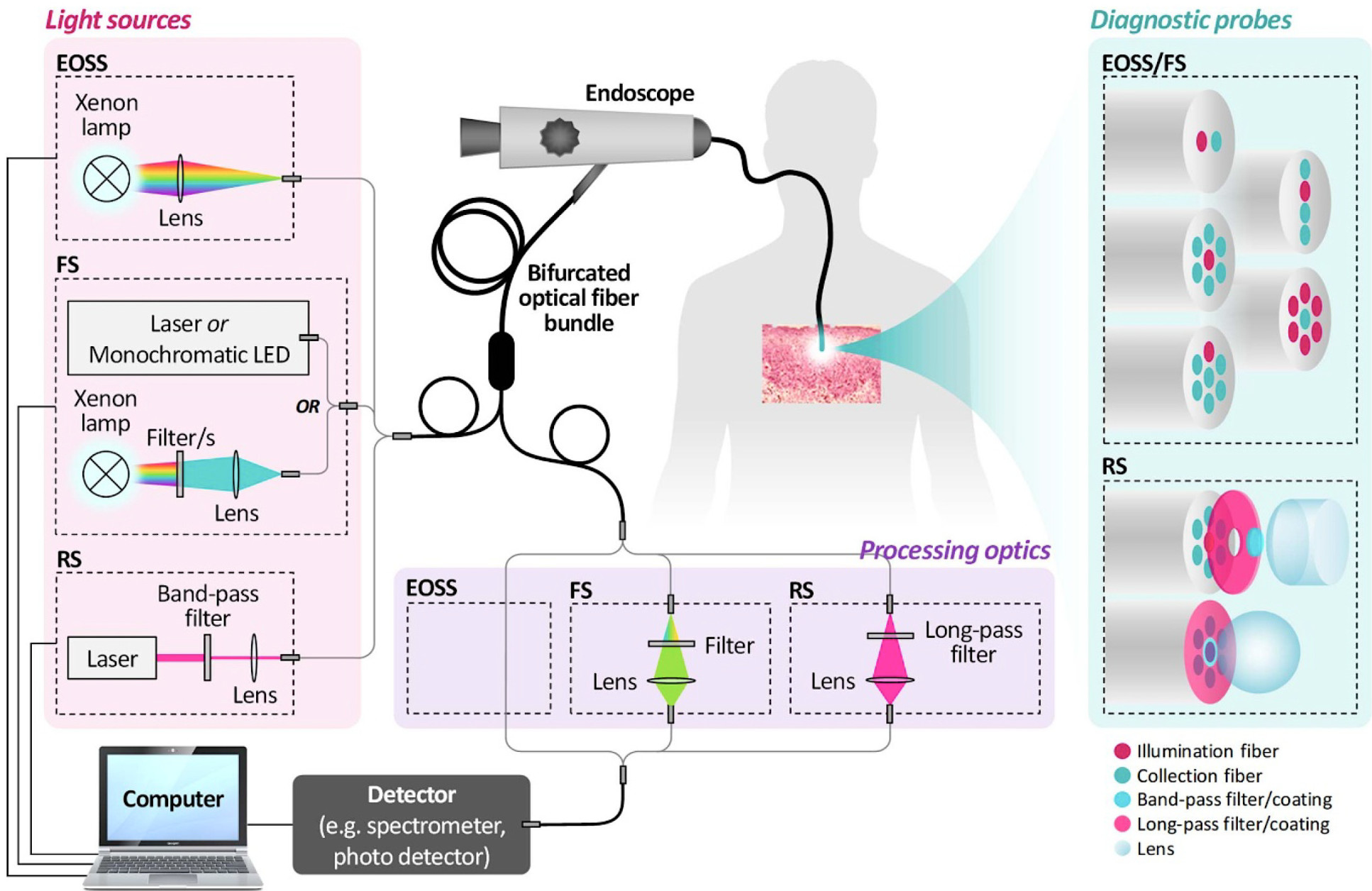

Our Hamlyn researchers reviewed the state of the art of optical spectroscopy and highlighted future perspectives for in-vivo medical diagnosis.
When light is incident to a biological tissue surface, combinations of optical processes occur, such as reflection, absorption, elastic and non-elastic scattering, and fluorescence. Analysis of these light interactions with the tissue provides insight into the metabolic and pathological state of the tissue.
Furthermore, in-vivo diagnosis of diseases using optical spectroscopy enables in-situ rapid clinical decisions without invasive biopsies. For in-vivo scenarios, incident light can be delivered in a highly localised manner to tissue via optical fibres, which are placed within the working channels of minimally invasive clinical tools, such as endoscopes.
Moreover, according to the latest Global Opportunity Analysis and Industry Forecast report, the market of bio-photonics is rapidly growing and the global bio-photonics market is predicted to reach $63.1 billion by 2022. A thorough up-to-date review of the current technique development in this clinical area is, therefore, needed to offer knowledge and insight into this field to broader readers.
A review of the state of the art and future perspectives of optical spectroscopy for in-vivo medical diagnosis
In the review, several types of point-based optical spectroscopy techniques (elastic optical scattering spectroscopy, fluorescence spectroscopy, Raman spectroscopy, and multimodal spectroscopy) for the diagnosis and monitoring of diseases states of tissue in an in-vivo setting are introduced and explored. Examples of the latest and most impactful works for each technique were then critically reviewed by our researchers at the Hamlyn Centre.

In the conclusion of this review paper, our researchers not only addressed current challenges and unmet clinical needs, but also future opportunities, such as point-based spectroscopies for robot-guided surgical interventions.
This timely Topical Review will be considerably useful for biomedical engineers and clinicians with an interest in optical diagnosis and will contribute to the discussion on the current and future directions of the field of optical spectroscopic in-vivo diagnosis.
This research was supported by EPSRC Programme Grant “Micro-robotics for Surgery (EP/P012779/1)” (Jang Ah KimDominic J Wales , "Optical spectroscopy for in vivo medical diagnosis—a review of the state of the art and future perspectives", , 2 (4), August 2020).
Supporters

Article text (excluding photos or graphics) © Imperial College London.
Photos and graphics subject to third party copyright used with permission or © Imperial College London.
Reporters
Dr Jang Ah Kim
Department of Mechanical Engineering

Contact details
Email: j.a.kim@imperial.ac.uk
Show all stories by this author

Erh-Ya (Asa) Tsui
Enterprise

Contact details
Email: press.office@imperial.ac.uk
Show all stories by this author

Dominic Wales
Department of Electrical and Electronic Engineering

Contact details
Email: press.office@imperial.ac.uk
Show all stories by this author



